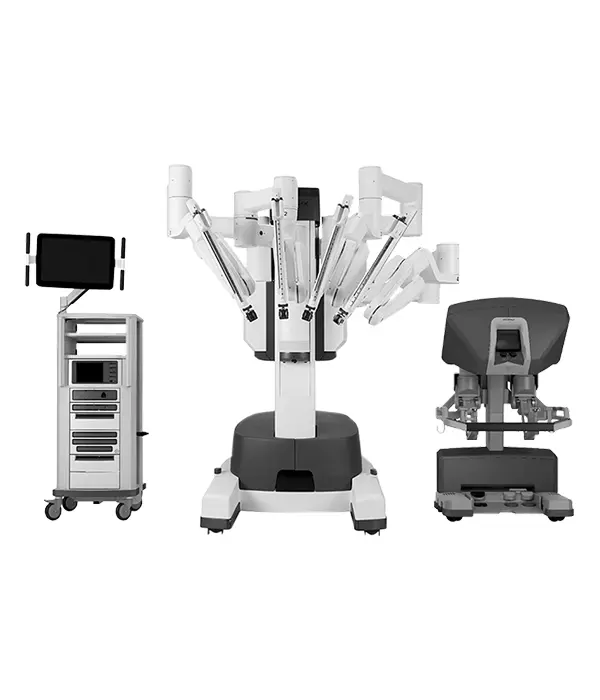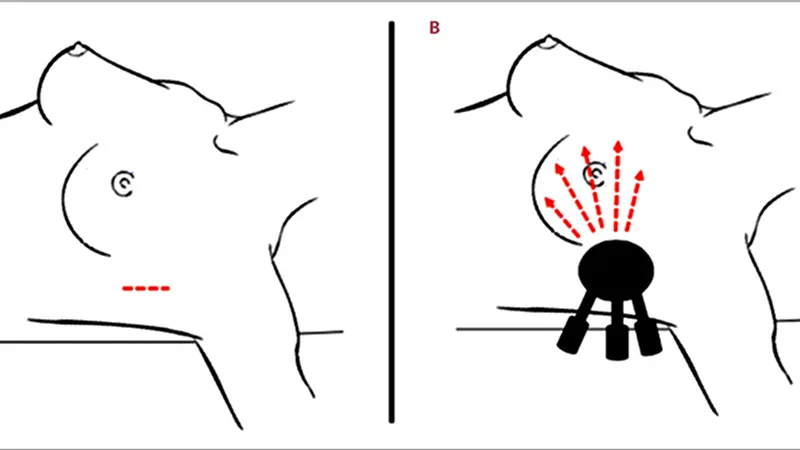Robotic mastectomy
Robotic mastectomy is an innovative surgical technique where a surgeon uses robotic technology to perform a mastectomy, typically with the goal of removing breast tissue while minimizing scarring and improving cosmetic outcomes.

This approach is an emerging option for both breast cancer treatment and prophylactic mastectomies, and it may offer certain advantages over traditional open surgery or minimally invasive techniques.
Key Features of Robotic Mastectomy
- During a robotic mastectomy, the surgeon operates through a few small incisions using a robotic system, such as the da Vinci Surgical System. The system allows the surgeon to manipulate surgical instruments with precision using robotic arms that provide enhanced dexterity, precision, and control.
- The surgeon sits at a console and controls the robotic arms, which translate the surgeon's hand movements into more refined and precise motions, allowing for delicate dissection and removal of breast tissue.
- Robotic mastectomy is a minimally invasive procedure, meaning that it is performed through small incisions, which leads to less visible scarring compared to traditional mastectomies. This can result in a more aesthetically pleasing outcome.
- One of the primary goals of robotic mastectomy is to make the incisions in less noticeable areas, such as in the armpit (axilla), which leaves the chest largely unscarred.
- Risk Models: Various models, such as the Gail Model, Tyrer-Cuzick model, or BOADICEA may be used to estimate a woman’s individual risk of developing breast cancer.

- Robotic mastectomy is often used in conjunction with nipple-sparing mastectomy (NSM) or skin-sparing mastectomy (SSM) techniques, which allow for the preservation of the nipple, areola, and most of the breast skin, enhancing cosmetic results.
- The precision of robotic surgery can help to carefully preserve the nipple-areola complex and underlying skin, facilitating immediate breast reconstruction.
- The robotic system typically includes a 3D high-definition camera, which provides the surgeon with magnified views of the breast tissue and surrounding structures. This enhanced visualization helps improve the accuracy of the procedure and may reduce the risk of complications.

Benefits of Robotic Mastectomy
Improved Cosmetic Outcomes
Due to the smaller incisions and more precise tissue removal, patients often experience better cosmetic results with robotic mastectomy, especially when combined with immediate breast reconstruction.
Minimal Scarring
One of the major advantages of robotic mastectomy is the minimal scarring, as incisions are made in discreet locations. This can be particularly appealing to patients concerned about body image post-mastectomy
Potentially Faster Recovery
Minimally invasive techniques, such as robotic surgery, may result in less postoperative pain, shorter hospital stays, and quicker recovery compared to traditional open surgery. However, recovery times can still vary depending on individual cases and whether breast reconstruction is performed.
Precision
The robotic system’s enhanced control and visualization may allow for more precise tissue removal, potentially leading to reduced risk of damage to surrounding structures and fewer complications.
Eligibility for Robotic Mastectomy
Robotic mastectomy is typically offered to women who
- Are candidates for nipple-sparing mastectomy or skin-sparing mastectomy.
- Have early-stage breast cancer or are undergoing prophylactic mastectomy due to a high risk of developing breast cancer (e.g., BRCA mutation carriers).
- Desire the best possible cosmetic outcome after surgery.
- Have not had prior extensive surgery or radiation that may affect the skin and tissue quality around the breast.
However, not all women are candidates for robotic mastectomy. The eligibility depends on factors such as:
Risks and Considerations

Future of Robotic Mastectomy
Robotic mastectomy is still relatively new, and long-term data on its outcomes are limited. However, early studies suggest that it can be as safe and effective as traditional mastectomy in appropriate candidates, with the added benefit of improved cosmetic outcomes and less scarring.
Recovery from Robotic Mastectomy
The recovery from a robotic mastectomy is similar to other minimally invasive mastectomies. Patients may experience:
- Mild to moderate pain, which can be managed with medication.
- Some swelling and bruising around the surgical area.
- A shorter hospital stay, with some patients going home the same or the next day.
- Gradual return to normal activities over the course of several weeks.





